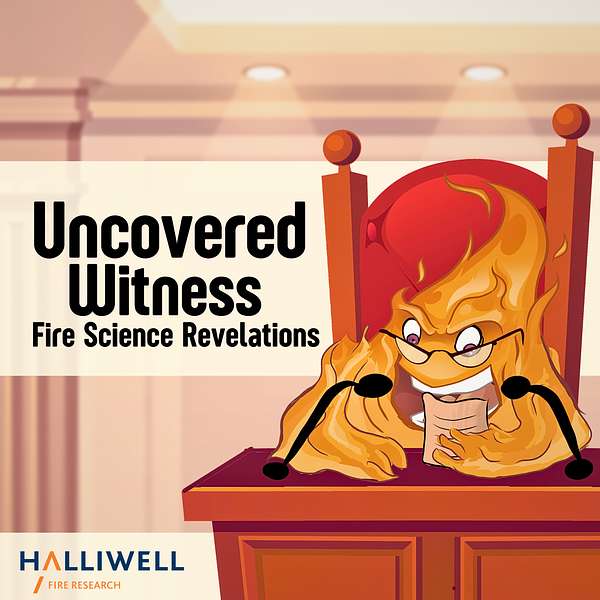
Uncovered Witness: Fire Science Revelations
In this podcast, I am joining HALLIWELL Fire Research to provide a fundamental insight into fire science. With content that does not require any prior knowledge, we hope to guide the listener from the basics into the real fire science revelations. With an in-depth discussion of past catastrophic fires and the most impactful research, we build a sound foundation on where the knowledge on fire comes from. We also take a look into the future and how the field may change in the coming years.
"Uncovered Witness" aspires to foster a deeper appreciation for fire science, highlight the critical role of fire safety in architectural and engineering design, and encourage a multidisciplinary approach to improving fire safety standards. By making fire science accessible to a diverse audience, including lawyers, investors, architects, and others, the podcast underscores the universal relevance of fire safety knowledge and its impact on society. Through education and awareness, it aims to inspire improvements in fire safety practices and designs, contributing to the prevention of fire-related tragedies.
Uncovered Witness: Fire Science Revelations
S2E03 | Behavioural sequence and role-rule model
Welcome to Season 2 of Uncovered Witness: Fire Science Revelations! This season, the show's theme is Humans as part of a fire safety engineered system. In this series, we will unravel our understanding of human behaviour in fires and how this complex behaviour may be accounted for in the fire-safe design of buildings. Our understanding of the occupant response, decision-making process and biases may influence our design of exits and improve (or impede) the egress process.
This episode is all about human behaviour theories - useful concepts that allow us to explain some of the behaviour observed in real-world fire incidents and evacuation drills. We learn about the behavioural sequence model, which explains the sequence of actions taken in the pre-evacuation time. Then, we move to the social influence model, which explains how normative and informative social influence influences people's actions. The first relates to the rules and social norms in the environment where the evacuation occurs and how people are afraid to not break those rules even while in danger. The informative social influence refers to how we use others as our source of information or to confirm our own choices.
Further in the episode, we discuss the role-rule model and how our roles in our normal lives remain the same in the evacuation context. We try to define how these roles may be disturbed and how establishing a new hierarchy for evacuation may streamline the process.
Guests featured in this podcast episode:
- Prof. Daniel Nilsson, University of Canterbury, Halliwell Fire Research
- Josh Gibbons, Halliwell Fire Research
This show is produced by the Fire Science Media for Halliwell Fire Research. Executive producer - Monika Węgrzyńska, scripting and production - Monika and Wojciech Węgrzyńscy, sound engineer - Mikołaj Jarząbek. All rights reserved. 2024.